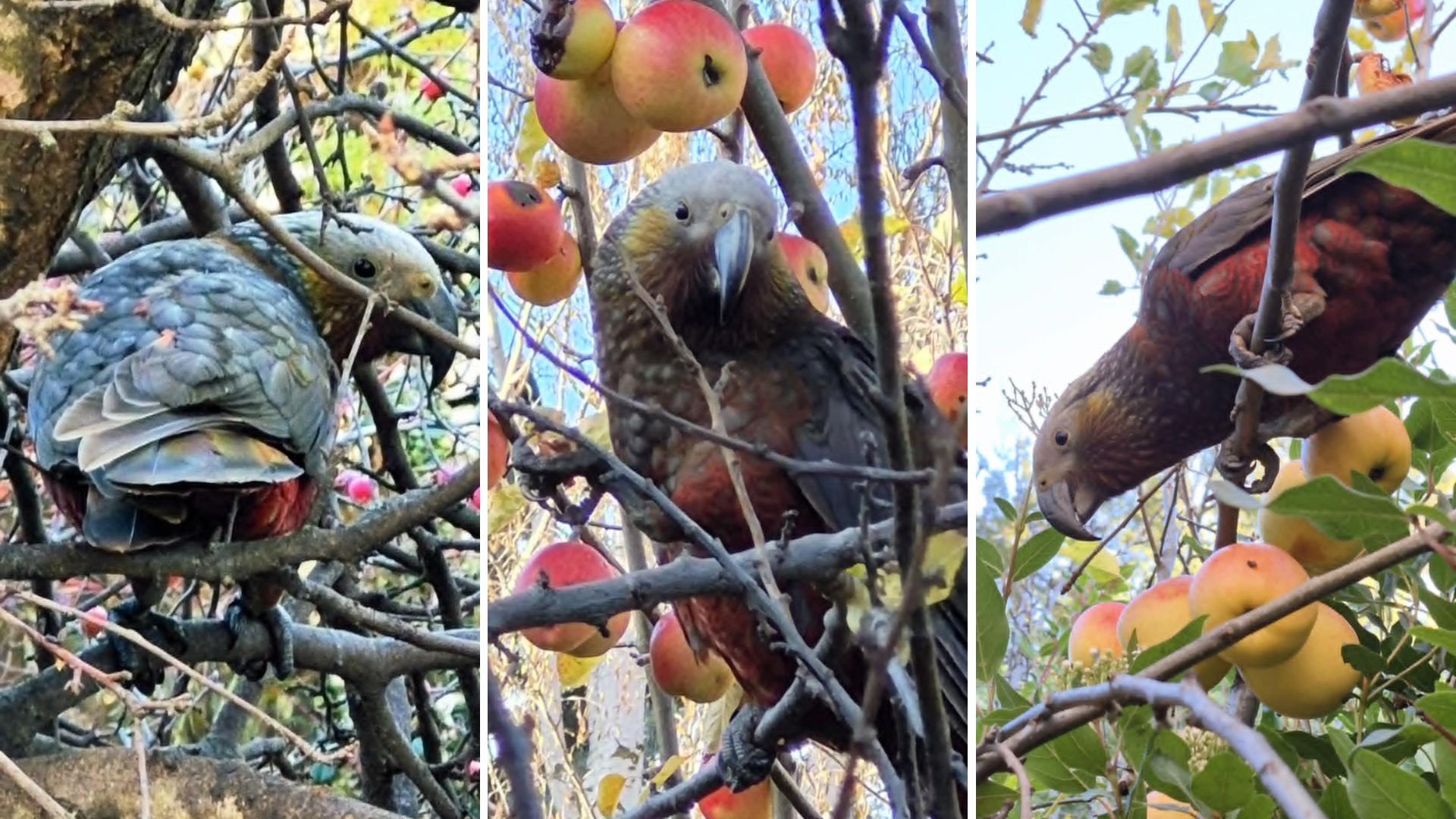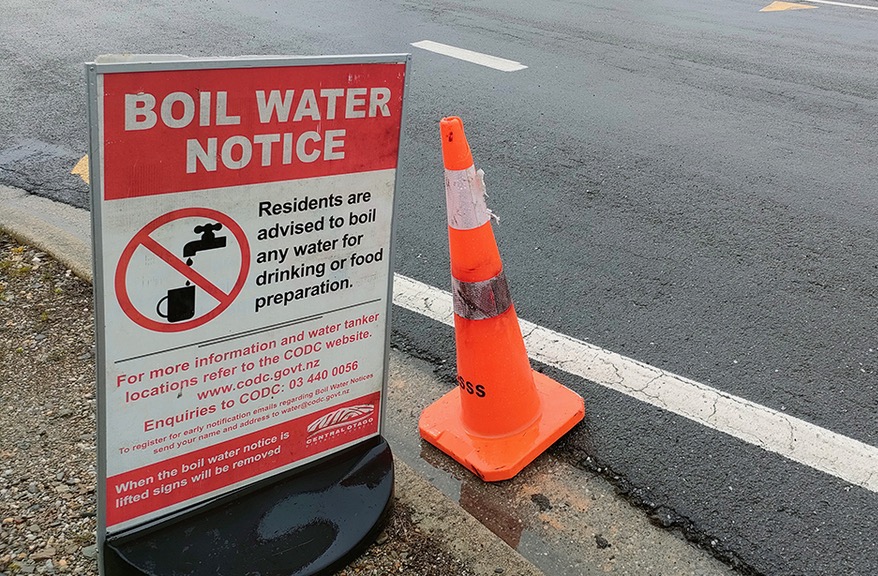Cheeky kākā charms Bannockburn local
Kim Bowden l The Central App
30 July 2025, 5:45 PM
 Although now moved on, a rare backyard visitor - a South Island kākā - snacked on fruit trees in a Bannockburn garden over recent months. Images: Sian Fiebig
Although now moved on, a rare backyard visitor - a South Island kākā - snacked on fruit trees in a Bannockburn garden over recent months. Images: Sian FiebigIn recent months, a feathered visitor made itself right at home in Bannockburn - dropping in for apples, popping by the clothesline, and leaving a lasting impression on one local resident.
The surprise guest? A South Island kākā, the large, noisy, and vulnerable native parrot known for its cheeky personality and powerful beak.
Bannockburn resident Sian Fiebig said the bird spent weeks hanging around her backyard, becoming a regular part of her day.
“It would fly around to the clothesline when I'd take clothes out to hang up and make some noises like it was wanting some company,” she said.
With a well-planted garden full of fruit trees, Sian suspected her backyard was a kākā haven.
“I have got a very well planted yard, so there's lots of cover - trees and bushes and so on. But, it's been seen in Cromwell itself as well...So it's obviously going around looking for fruit trees,” she said.
Sian said the parrot seemed to roost overnight in a bush on the property and emerge each morning ready to feast.
“They’re quite cheeky, curious creatures. So it doesn’t fly away...it was here for weeks and weeks and weeks.”
A keen artist, Sian took photos of the bird and even painted a portrait of it.
South Island kākā are still considered threatened, so sightings like this are special - and uncommon - in Central Otago.
“Cromwell is not particularly close to any of the established populations, so it’s even more impressive to see them visit here,” Taylor Davies-Colley from Dunedin’s Orokonui Ecosanctuary said.
While it's hard to say exactly where the bird came from, Taylor suspected it might have travelled from the head valleys of Wānaka or Whakatipu in search of food.
“Historically this could have been kākā habitat, but what’s there now isn’t the type of habitat we would typically expect to see them in.”
Department of Conservation ranger James Speirs said sightings in the Cromwell area had been reported in the past year.
There’s no indication of a resident population, so it was likely the kākā was passing through, he said.
“This is most likely due to an increase in population in their home range as a result of increased predator control by community groups working in conjunction with DOC.”
He suspected the kākā would return to Cromwell, when their food source did.
Locals keen to see more kākā in the future could help by planting native trees, and supporting predator control work, he said.
Taylor agreed “trapping stoats, rats and feral cats” was the best way to help kākā thrive.
“Likewise, being a responsible pet guardian can be important too, as even pet cats can impact native biodiversity.”
And while it might be tempting to offer snacks, both experts warned against feeding kākā.
“Feeding can encourage negative behaviours like kākā picking at houses with their sharp beaks,” Taylor said.
“They’re very capable of finding and extracting food for themselves as long as we provide them with the forest they need.”
Have a story to share or comment to make? Contact [email protected]
NEWS
WHAT'S ON








